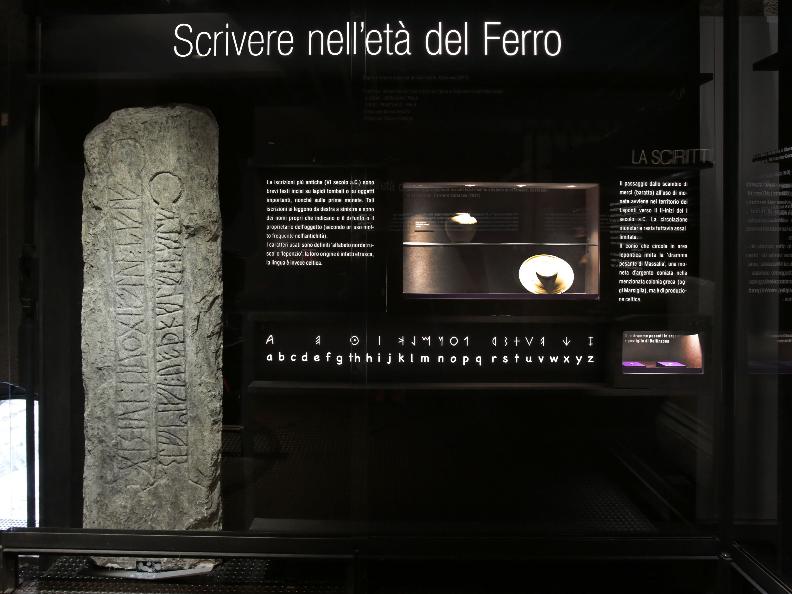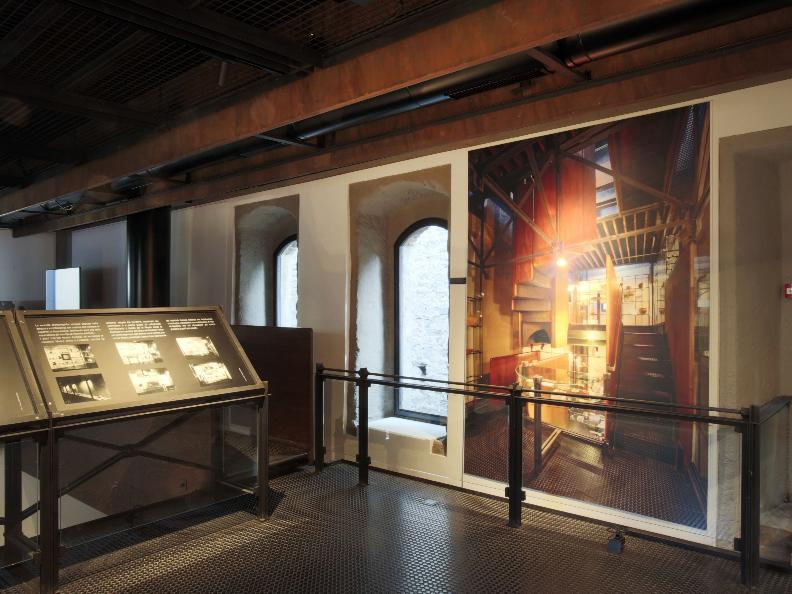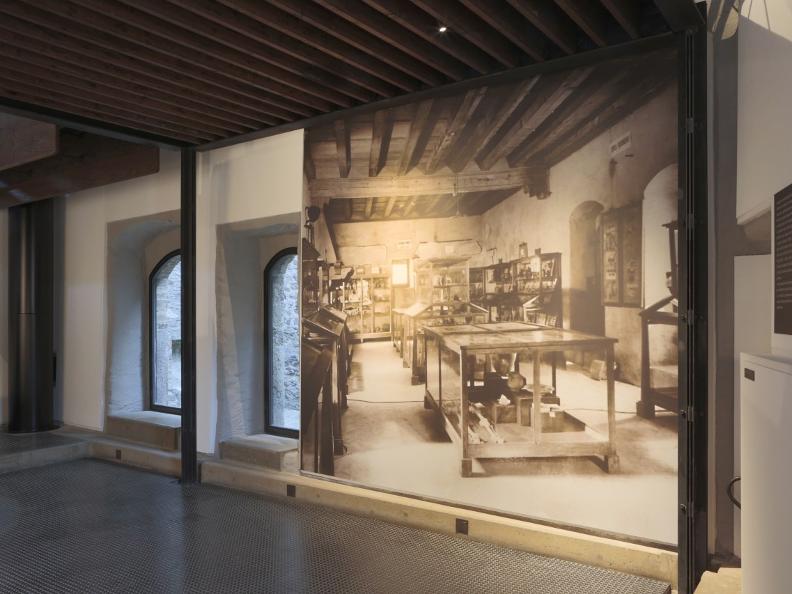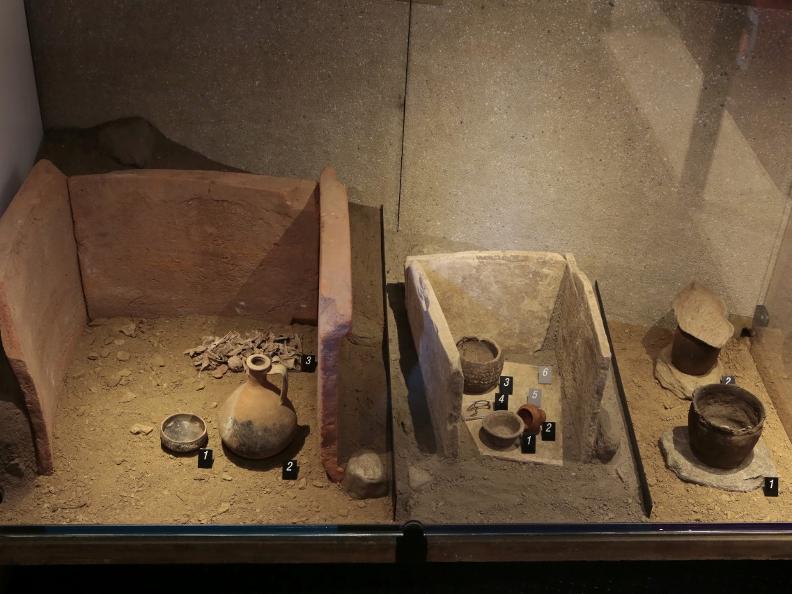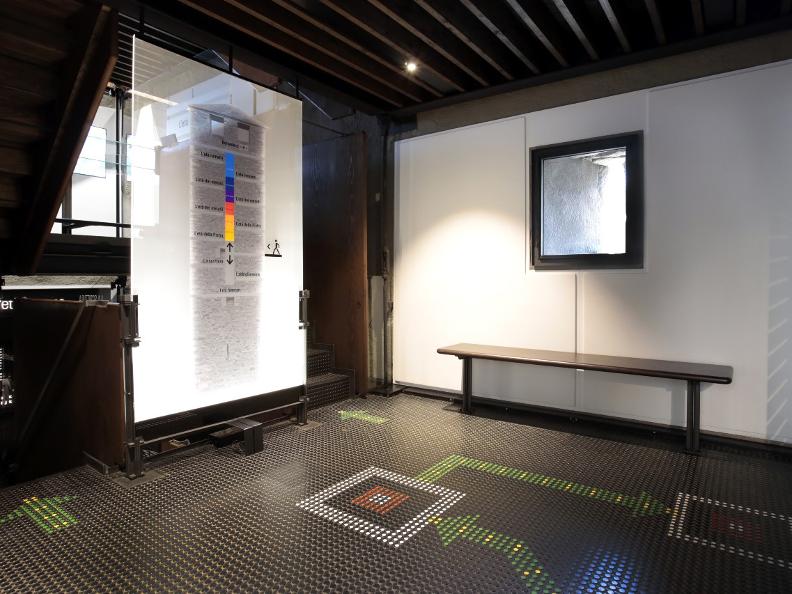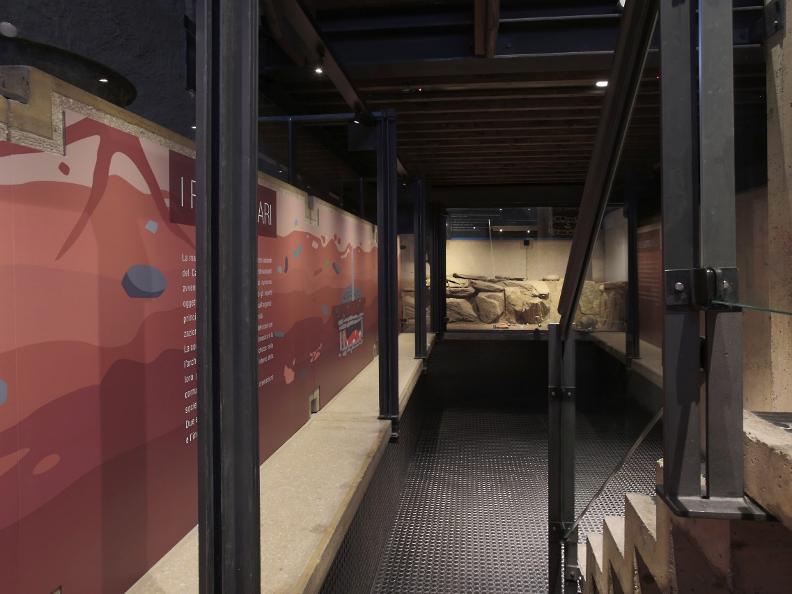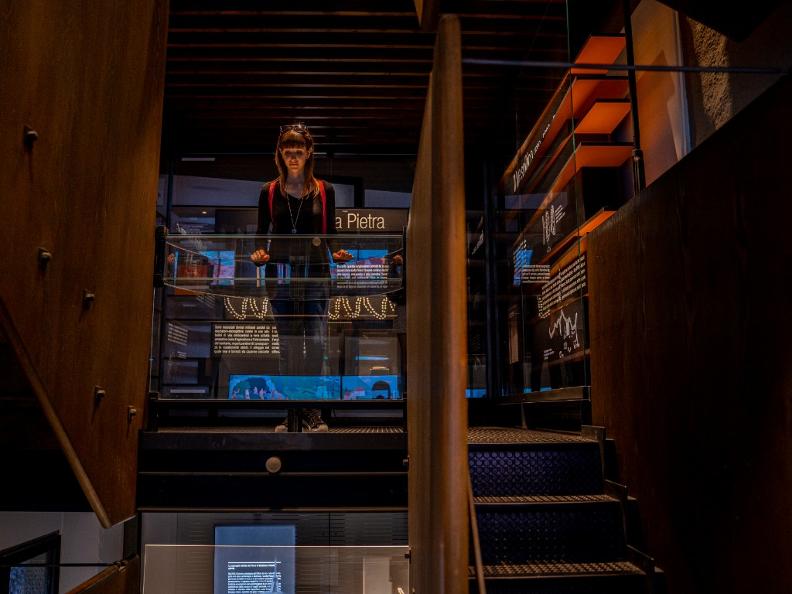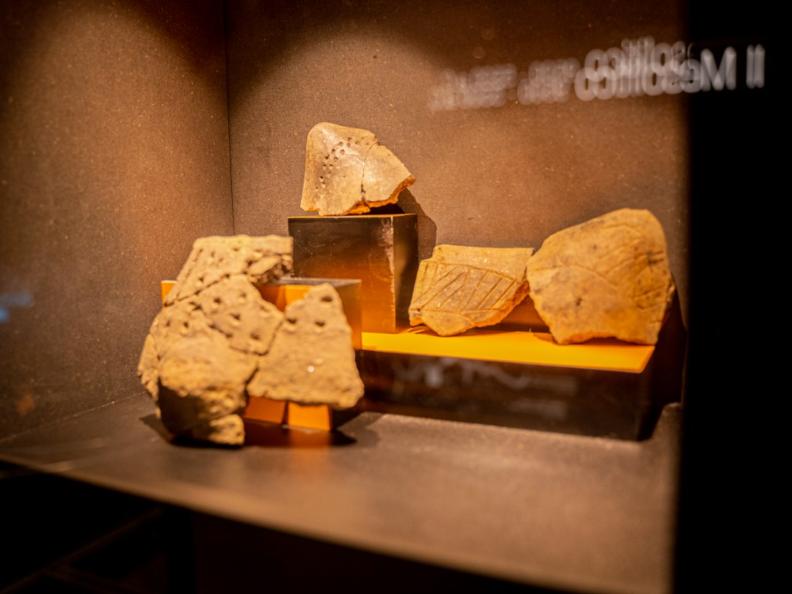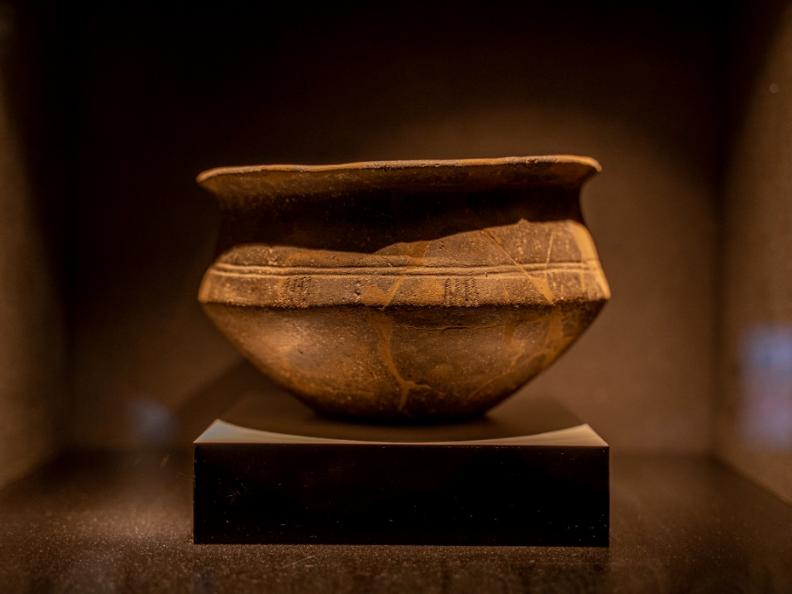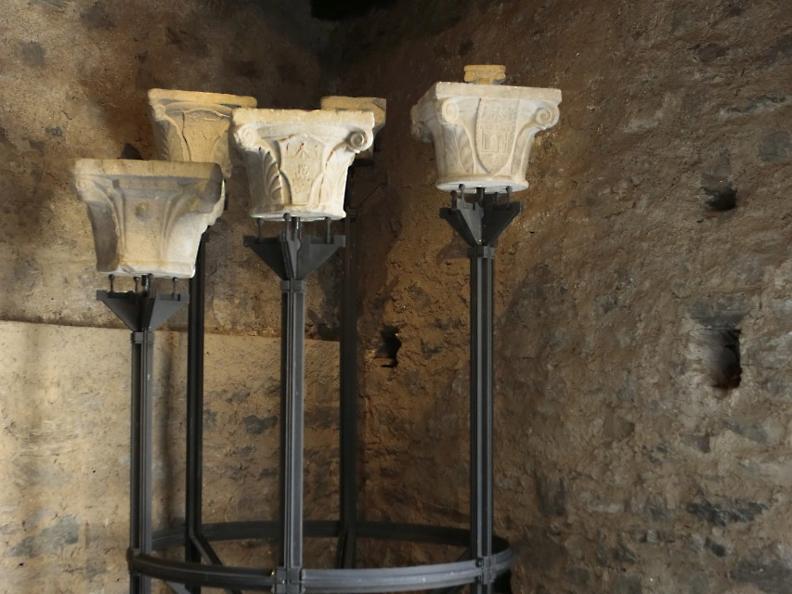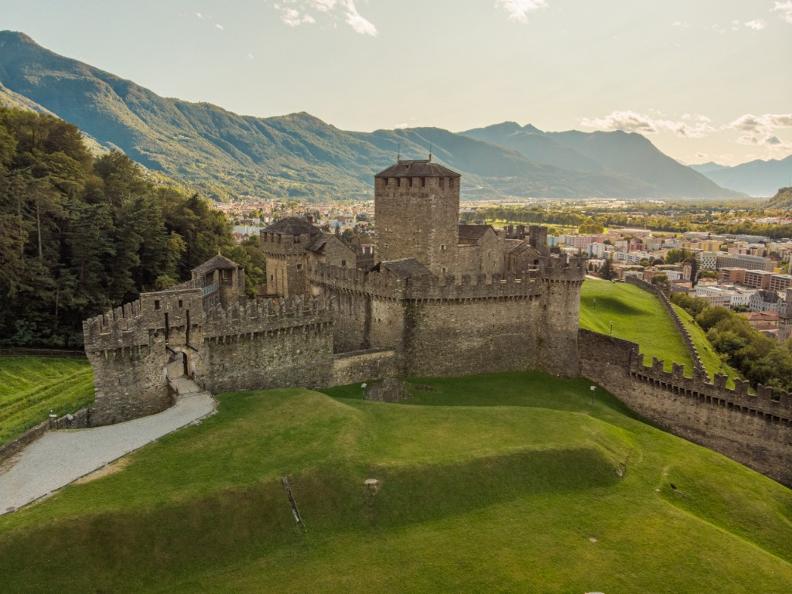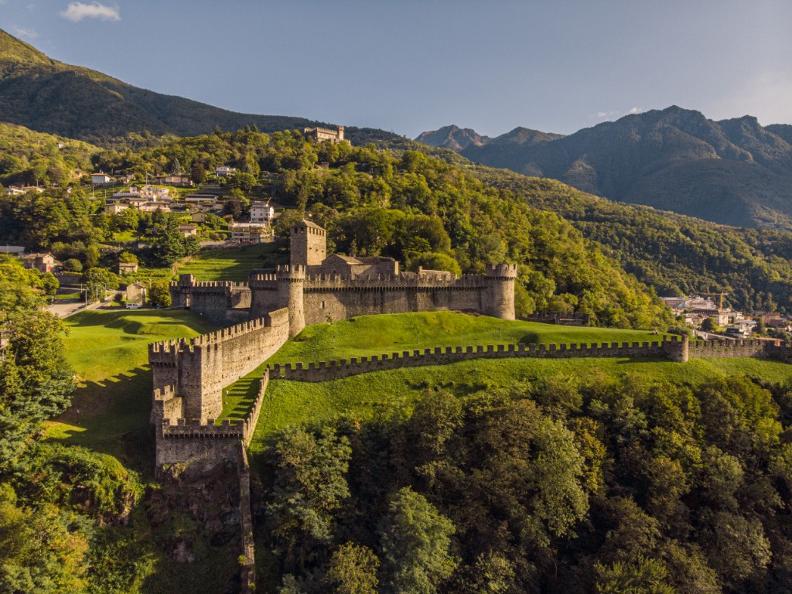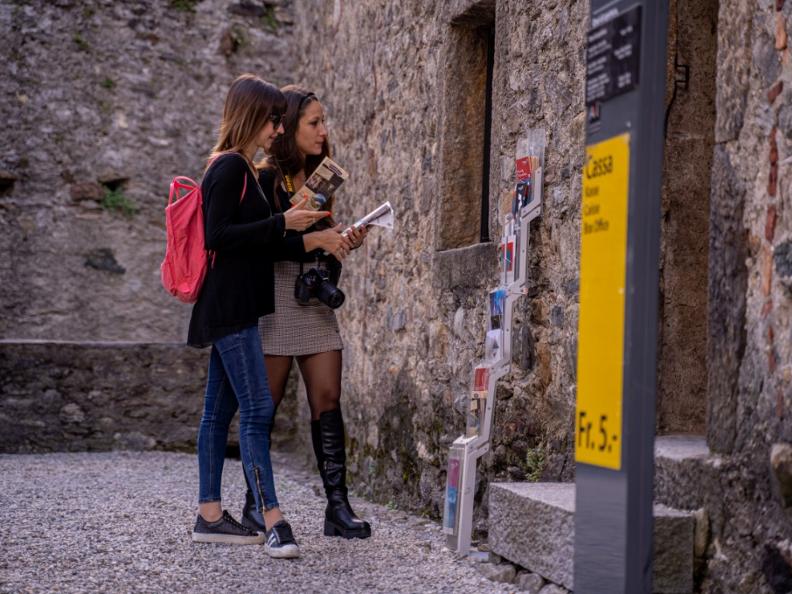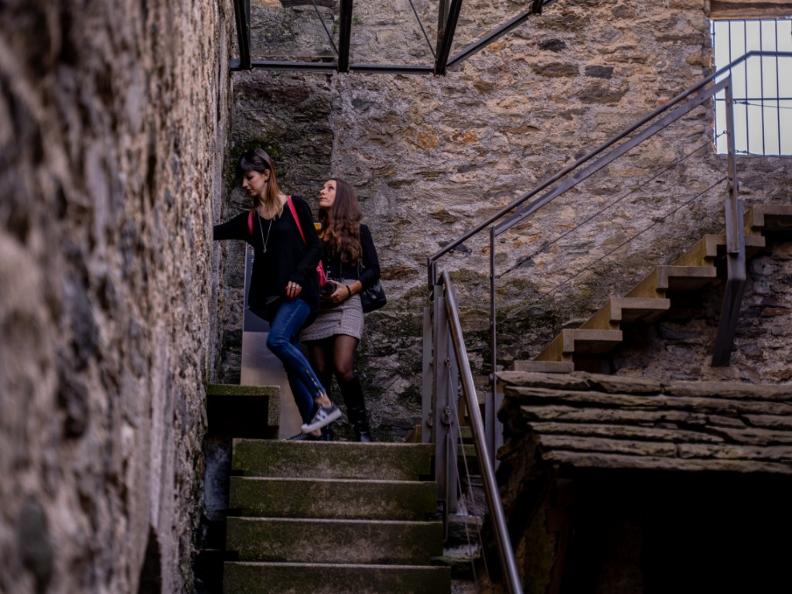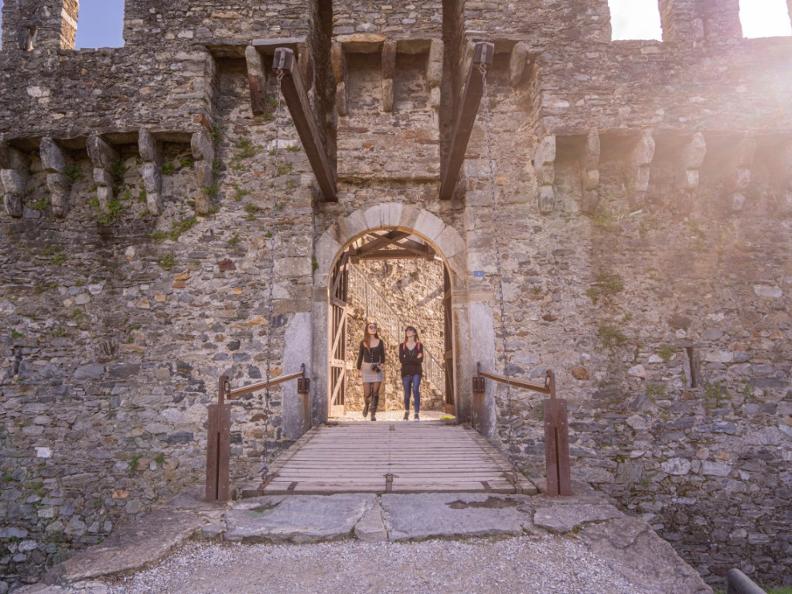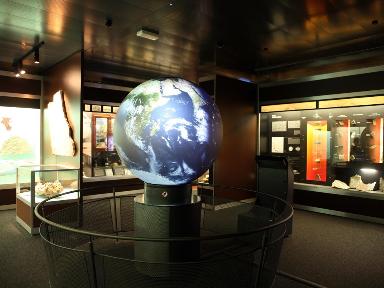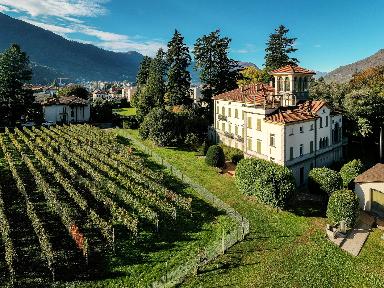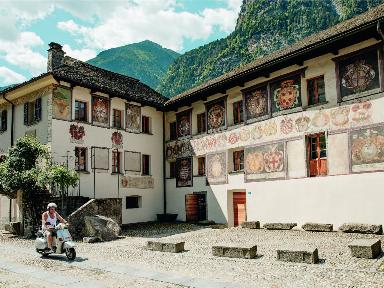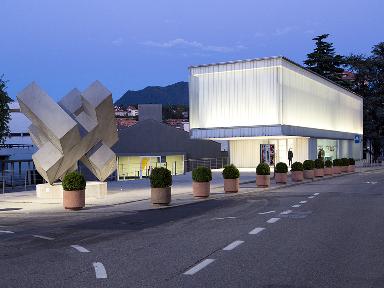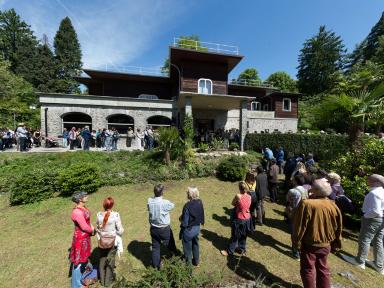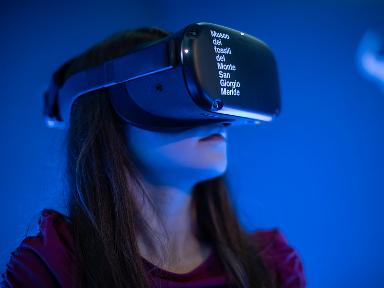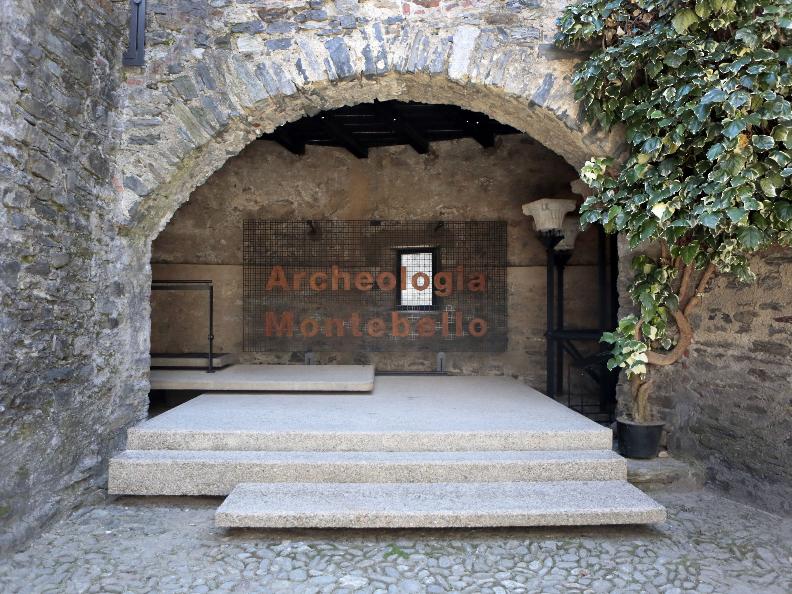
Archaeology at Montebello
The exhibition layout inside the Montebello Castle – Bellinzona
After several years of refurbishment, the Castle of Montebello reopened to the public with an exhibition concept which is more innovative and informative. The work was carried out in stages and supervised by the Logistics Division (Department of Finance and Economy) along with the Archaeology Service of the Office of Cultural Heritage (Department of Territory) who were responsible for a renewed museum layout.
In 1974, a project by architects Mario Campi, Franco Pessina and Niki Piazzoli architecturally transformed the interior of the Castle museum which is organized in two distinct spaces.
In the Palazzetto, the history of the Castle is presented through old documents, drawings, period photographs and architectural projects from its construction at the end of the 13th century, through the extensive restoration and reconstruction between 1902-1910, and into the last important architectural intervention of the 1970s.
The Castle tower houses an archaeological display of a selection of discoveries from Canton Ticino, with particular attention given to the region of Bellinzona and the upper valleys. The visitor is invited to discover this area through the finds, including some rare and valuable pieces such as the duck-billed jug from Giubiasco-Palasio displayed at the entrance, which are linked to the natural resources and the human presence characterizing it since ancient times.
In the tower, the exhibition itinerary proceeds vertically, following the thread of time in chronological order from the bottom (the Mesolithic, the most ancient period) to the top (the Roman, the most recent period). The sequence - subdivided into four exhibition floors, interspersed with three pictorial floors - reflects the methods of field research which brought to light archeological evidence on the basis of a stratigraphic interpretation: the deepest layers contain the oldest finds, the superficial layers contain the most recent. On each floor, the 'Time Map' created by the Ticino Archaeological Association and the corresponding chromatic references indicate to which era and in which context the objects on display belong.
At the top of the tower’s Belvedere, the view reveals the current geographical morphology of the territory.
In addition, the staircase descends to the lowermost floors to explore some themes of our Canton: the introduction of the first form of writing, which took place during the Iron Age, and its diffusion in Roman times; clothing, that is, how our ancestors dressed and adorned themselves; and the funeral rites used in ancient times.
An audio guide in four languages can be downloaded on smartphones to accompany the visitor throughout the exhibition.
Opening times 2023
07.11.2022 - 05.04.2023: closed
06.04.2023 - 05.11.2023: from 10:00 to 18:00
During the winter period for the Castles of Montebello and Sasso Corbaro only the external and internal courtyards can be visited.
Accessibility
The access for persons with reduced mobility is only partial. For more information, please contact the InfoPoint at the castle.
Photos ©:
- D. Rogantini-Temperli, Ufficio dei beni culturali, Bellinzona
- www.parisiva.ch
Features
- OPENING 23.03 - 03.11
- MUSEUMS History museums
